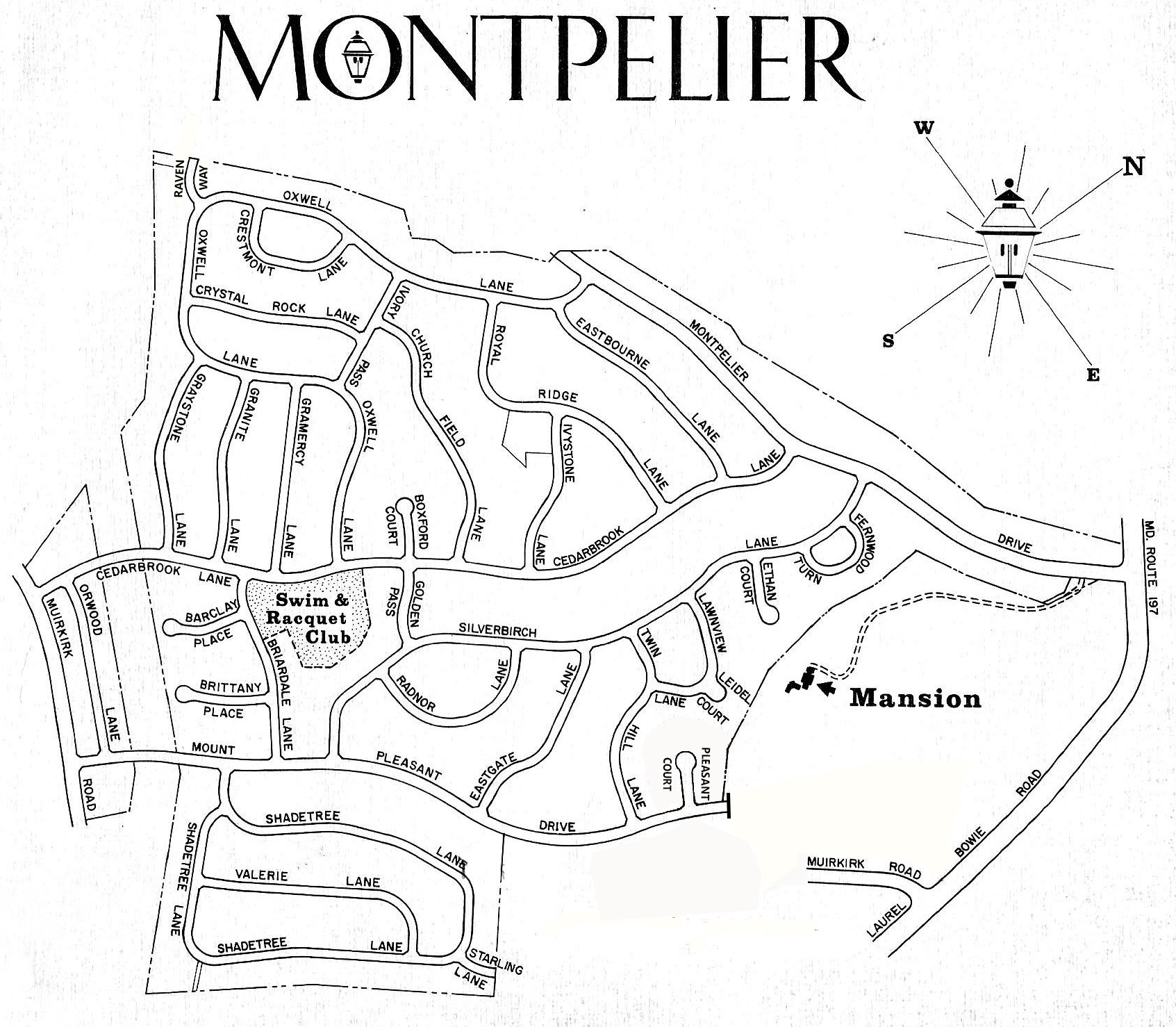As many of us have read on the community email list and comments on the previous post, Kelley Oklesson with the Prince George’s County Neighborhood Design Center has been responding promptly to each email she receives from Montpelier residents regarding the tree removal and replacement program here in Montpelier. Our Councilwoman Mary Lehman has also been forwarding to Kelley any questions posed by residents for follow-up. Many thanks to both Mary and Kelley for the responsiveness and care.
Here are some of the more commonly asked questions from the meeting and the email list in a (hopefully) easy-to-read Q&A format. If your questions is not addressed, post it in the comments below and we’ll be sure to get an answer for you. You can also reach Kelley directly by emailing to koklesson@ndc-md.org or calling 301-779-6010.
1. When will tree removal begin?
Tree removal in this area will begin on April 4th in the Andover Heights neighborhood, outside of Montpelier. Contractors will be working on Claxton, Portsmouth and Imperial Drives. Kelley scheduled this to allow Montpelier residents more time to contact her if we are concerned about removal of trees.
UPDATE: Neighbor Julie on Shadetree received the following update from Kelley:
“The removal was pushed back a few weeks. To my knowledge, the removal will start May 2. The removal contractor will most likely start in Andover Heights or on Montpelier Dr near 197, but these plans are not set in stone. This means that it may be a week to a few weeks before they make it down to shade tree lane. The replacement contractors will be planting trees a few weeks after removal.”
2. How will the program be carried out?
The program consists of 3 phases – risk assessment, removal and replacement. A risk assessment has been completed for Montpelier and Andover Heights by Kelley and Mr. Wayne Lucas, both of whom are ISA certified arborists. They have categorized three types of Bradford Pear trees for removal: Dead, Dying and High Risk. Only the dead, dying or high risk Bradford Pears will be considered for removal.
3. Why are the Bradford Pears being removed?
The slideshow that Kelly and Jan Townsend presented at the Board meeting in March is available below. (Use the play button to start the slideshow, then the forward/reverse button below the image to move the slideshow forward or backward.) The presentation gave a brief history of the Bradford Pear, the genetic defects, risks associated with the tree, information about the program and a list of replacement species. Neighbors have noted on the community email list and in reports to the county being narrowly missed by a falling Bradford Pear tree or and thousands of dollars in property damage and clean-up that has occurred during harsh weather.
4. What species of trees will replace the Bradford Pears in Montpelier? Will homeowners have a say in replacement tree species?
A variety of tree species will be replanted to replace the Bradford Pear trees. This is being done in part to avoid the problems we faces with the Bradford pears – they reach their life span at the same time, are susceptible to pests, and limit the diversity of wildlife attracted by the flora. As one neighbor has pointed out, though the look of a single species street is nice, it can be a recipe for trouble.
Kelley is willing to have a conversation with individual homeowners about replacements although in the end, she may not be able to accommodate requests for either ecological or aesthetic reasons. She would still welcome an opportunity to hear homeowners’ opinions about replacements.
The following species will be used in replacing the dead, dying and high risk Bradford Pear trees in the neighborhood. If you desire a particular species, please contact Kelley as soon as possible.
| Common Name | Size at Installation |
Max Mature Height | Characteristics |
| Red Sunset Red Maple | 2.5in. Cal. | 40+ ft. | Shade Tree, great fall color |
| Kousa Dogwood | 8′ Ht. Min | 15-20 ft. | Ornamental Tree, exfoliating bark, showy spring bracts |
| Crape Myrtle | 8′ Ht. Min | 15-20 ft. | Ornamental Tree, exfoliating bark, fuchsia summer flowers |
| Yoshino Cherry | 8′ Ht. Min | 15-20 ft. | Ornamental Tree, Showy white/light pink spring flowers |
| Okame Cherry | 8′ Ht. Min | 20-30 ft. | Ornamental Tree, Showy pink spring flowers |
| Willow Oak | 2.5in. Cal. | 40+ ft. | Shade Tree, willow-like foliage |
| Ivory Silk Lilac Tree | 2.5in. Cal. | 15-20 ft. | Ornametnal Tree, cream flowers |
| Greenspire Linden | 2.5in. Cal. | 40+ ft. | Shade Tree, dark green Heart-shaped foliage, white flowers |
| Allee Chinese Elm | 2.5in. Cal. | 40+ ft. | Shade Tree, exfoliating bark, vase shape branching structure |
| Greenvase Zelkova | 2.5in. Cal. | 40+ ft. | Shade Tree, vase shape, serrated foliage, yellow fall color |
| Eastern Redbud | 8′ Ht. Min | 15-20 ft. | Ornamental Tree, light purple flowers (may sub. for Dogwood) |
5. What streets are of most concern in Montpelier?
- Montpelier Drive, near entrance of 197
- Royal Ridge Lane, near entrance of Cedarbrook Lane
- Crystal Rock Lane
- Ivory Pass
- Crestmont Lane (southern side)
- Granite Lane
- Gramercy Lane, near entrance of Oxwell Lane
- Cedarbrook Lane, near entrance of Muirkirk Road
- Briardale Lane
- Barclay Place
- Mount Pleasant Drive, near entrance of Briardale Lane
If you have a house on one of these streets and are concerned about the removal of a tree, please contact Kelley with any questions at koklesson@ndc-md.org.
6. Will healthy Bradford Pear trees also be removed? Will any other species, such as the crabapples be removed also?
The program will only removed Bradford Pear Trees, and only those that are dead, dying or considered high risk. Crabapple trees may be removed on a case by case basis, but also only if they dead, dying or high risk. The contractors will not remove a healthy Bradford Pear tree unless it poses a risk to the health or property of the community.
7. What if I don’t want my Bradford Pear tree removed?
If a community member is absolutely opposed to having their trees removed and live on one of the streets in the list above, they should contact Kelley immediately. She is willing to discuss specific removals with residents, but if a tree is diseased, poses a safety risk , dead or dying then the tree will have to be removed.
8. Can I get a replacement tree for a Bradford Pear tree that has already died and been removed?
The replacement supply is limited. All the removed will be replaced and some of the previously removed will be replaced. Due to limited supply, the program cannot guarantee replacements for old removals. But Kelley is happy to discuss this with any resident to see what can be done.
9. Is there any cost to the homeowners for removal of the Bradford Pear trees or their replacement?
There is no cost to the homeowner for removal or replacement. The program is in place to hopefully lower future cost for removal or trimming of Bradford Pears by targeting the current dead, dying and high risk. Obviously the county must clean up fallen trees and limbs after storm events which is a very high cost due to inferior tree species like the Bradford Pear. Also the removal of the trees may decrease the chances of power outages due to fallen branches, thus reducing increases in electric bills.
10. What will happen to the stumps of the trees removed?
All trees that are to be removed are to be stump grinded. Also, previously removed trees that still present stumps have also marked those for grinding.




What happened to the tree plantings. They cut a lot of trees down, marked the curbs, but didn’t put all the trees back. Why?